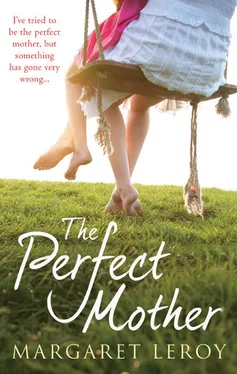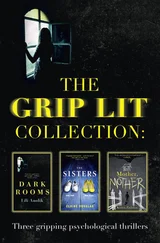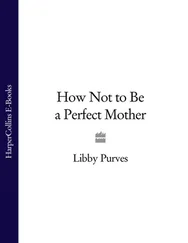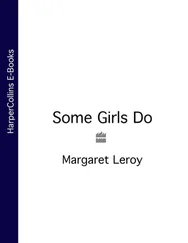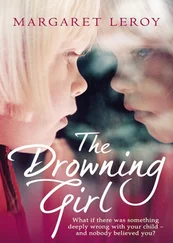Acclaim for Margaret Leroy’s The Perfect Mother A New York Times Notable Book of the Year
“It’s a premise familiar from some of Hitchcock’s best
movies: seemingly upright people, through no fault of
their own, see their lives unravel before their eyes. Margaret
Leroy’s [ The Perfect Mother ] taps the compelling emotions inherent in that storyline.”
— Seattle Times
“Written with a wonderfully convincing authority…
I was eager to find out what happened next. I dreaded the
worst and I hoped for the best – and I won’t tell
you which happens.”
— New York Times
“The novel reads like a thriller and is brilliant at portraying
the slow, steady disintegration of a seemingly ordinary life
when secrets are unearthed and dark suspicions spread.”
— Baltimore Sun
“As Cat becomes ever more driven, Leroy gives her daily
life a lurking undertone of menace that adds an element
of psychological mystery…creating delicious
uncertainty about the heroine.”
— Kirkus Reviews
“This is a gripping medical mystery from an assured
writer who could be the next Minette Walters.
Highly recommended.”
— Library Journal
“Written with the intense pace of a thriller and the brooding
concealment of a mystery novel…Leroy ultimately plumbs
the complicated depths of motherly instinct to deliver a
novel of great suspense. Did Cat intentionally hurt her
daughter to get attention? The answer will be a hard-won
surprise readers won’t soon forget.”
— Minneapolis Star Tribune
“With wonderfully descriptive writing and psychological
insight, Leroy crafts a mesmerising tale of love and fear.”
—www.wordsmitten.com
Acclaim for Margaret Leroy’s The Drowning Girl
“Margaret Leroy’s eerily lovely novel [ The Drowning Girl ] is one of those rare books you’ll sit with till your bones ache.”
— Oprah Magazine
“This is a really special book. Sylvie’s vulnerability is so
powerfully drawn, so flesh-and-blood real, that you want
to reach into the pages and protect her yourself.”
—Louise Candlish
“Every once in a blue moon, a masterful writer dives into
Gothic waters and emerges with a novel that – like Daphne
du Maurier’s Rebecca, Henry James’s The Turn of the Screw, or, more recently, Patrick McGrath’s Asylum – simultaneously celebrates and transcends the genre. Welcome Margaret Leroy to the clan. Haunted and haunting, [ The Drowning Girl ] is a wonderfully original, deliciously suspenseful mystery.”
— Publishers Weekly
“This book is perfect for anyone wanting an intriguing
story which is also well-written and moving.”
—Adele Geras
“This book was compelling from the first chapter…
Margaret Leroy’s twists are carefully orchestrated
so Grace had my sympathy and understanding. It
is a book I will never forget…Read it – it is such
a refreshing change from the ususal frothy stories.”
— Candis
“A stunning, engaging and enlightening tale of motherly
love…Gothic fiction at its best.”
— Minneapolis Star-Tribune
“Clearly the work of an accomplished writer – a haunting
book and a tantalising read.”
— Providence Journal
The Perfect Mother
Margaret Leroy
www.millsandboon.co.uk
I am deeply grateful to my wonderful editor, Catherine Burke, for her intelligence, warmth, and commitment to my writing, and to the marvellously dynamic team at MIRA, especially Oliver Rhodes; also to my agent Kathleen Anderson for all her tireless work on my behalf, to my UK agent, Laura Longrigg, for so much empathy and insight, and to Judy Clain, my editor at Little, Brown and Company, New York. Thanks to Lucy Floyd for her perceptive comments on the book. Mick, Becky and Izzie sustained me with their love and encouragement, as always.
I am indebted to the National Children’s Bureau, UK, for permission to quote from Trust Betrayed?, edited by Jan Horwath and Brian Lawson. Among the other books I read, there were two that I found particularly valuable: Hurting for Love, by Herbert A Schreier and Judith A Libow, and The Pindown Experience and the Protection of Children, the moving and disturbing report of the Staffordshire Child Care Inquiry conducted by Allan Levy, QC, and Barbara Kahan.
Daisy hears them first: the crunch of feet on the gravel, the resonant clearing of throats outside our living-room window.
She darts to the window, tugs at the curtain.
‘They’re here,’ she says.
She kneels on the sofa, presses her face to the glass. Her warm breath mists the pane.
I turn off the light, so the room is lit by the dancing red of the firelight, and go to stand beside her, pulling the curtain open. My head is close to hers; I smell the musky sweetness of her hair. Sinead hangs back, fiddling with her new velvet choker, an early Christmas present from her mother. She’s reached that age when enthusiasms have to be carefully concealed; and anyway hip-hop is really more her thing.
I glance at Richard. He folds his Times and turns towards the window. In the shadowed room and the flickering of the firelight, I can’t see if he’s smiling.
‘Look,’ says Daisy. ‘They’ve got snowflakes on their eyelashes.’
There are ten of them in the darkness by the steps to our front door. They’re bundled in coats and scarves, the everyday colour leached from their clothes and faces by the torchlight. Their breath is thick, there are siftings of snow on their shoulders. They move around and shuffle into position. Nicky is there, in a woollen hat that hides her crisp black hair, with little reindeer dangling from her ears. She looks up at Daisy, grins and blows her a kiss. The earrings shiver.
The others have their eyes down; they’re fumbling through their music books with clumsy wet-gloved fingers. There are women I recognise from Daisy’s class at school, Kate’s mother, Natalie’s mother—women I only know by the names of their children—and men from the choir at the church round the corner, and two or three teenage children. The torches they carry suffuse their faces with red: a myriad little torches glimmer in their eyes. Next to Nicky there’s a man I don’t recognise. He has unruly fair hair, a darkly gleaming leather jacket; I can just make out his heavy eyebrows and the line of his jaw. Above them a nail-paring moon shines briefly through the cloud. Nicky knows what this moon is meant to mean: she’s been through Feng Shui and aromatherapy and her current passion is witchcraft—the kind of bland designer witchcraft you can read about in lavish books with pastel velour covers—and she says that the moons have names, and this is the birch moon—the first moon of the year, the moon of beginnings.
The snow began this morning, with a perfect, theatrical sense of timing. In our garden, there’s a milky skin of ice on the pond, and the dangling tendrils of forsythia are white knotted strands of wool, and the stone frog fountain has a hat of snow. We played snowballs, Sinead and Daisy and me, staying out far too long, not realising how chilled we were, and when we finally came back into the warmth of the kitchen Daisy’s fingers were red and shiny in spite of her gloves, and she cried as the blood came back into them. I told her they hurt because they were getting better, warming up, but it didn’t help to know that, she couldn’t stop crying. In the cold the foxes are getting bolder, coming close to the house. This afternoon I saw them on the patio, looking in at the French window then shying away, mangy, thin, golden, one with a paw that it couldn’t touch to the ground, quite silent yet leaving perfect footprints. Since then more snow has fallen, blotting out the foxes’ footprints and our own, so our back garden looks as though no one has ever been there. If you went out there now, you would feel a thing you rarely feel in London, a sense of how high the sky is, of the immensity of the night.
Читать дальше
